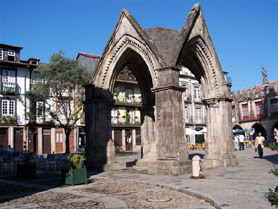
The Alberto Sampaio Museum was created in 1928 to house the collection of the extinct Chapter house of N.Sra da Oliveira and the other churches and monasteries of Guimarães, which were at that time in the hands of the state. It is situated in the historical centre of the exact site where in the 10th century Mumadona founded her monastery and around which grew up the town of Guimarães. The space which the museum occupies, the ancient priory and chapter house, the cloisters and the mediaeval rooms, all once belonged to the Chapter house of N.Sra da Oliveira. and have a historic and artistic value of their own. The museum boasts important collections of archtectural, figure and tomb sculptures covering the mediaeval and renaissance periods, extending as far as the 18th century. The collection of silverwave is one of the finest in the country.
Outstanding is the chalice offered by King Sancho I, the 13th century image of St.Mary of Guimarães, processional crosses and the magnificent gothic altarpiece in gilded silver from the end of the 14th century representing the Nativity.
One should also point out the tunic wom by King joão I at the battle of Aljubarrota; the fresco from the 16th century depicting the beheading of St. John the Baptist, paintings from the 16th and 17th centuries in mannerist style, baroque carvings, embroidered vestments, tiles and faience.












